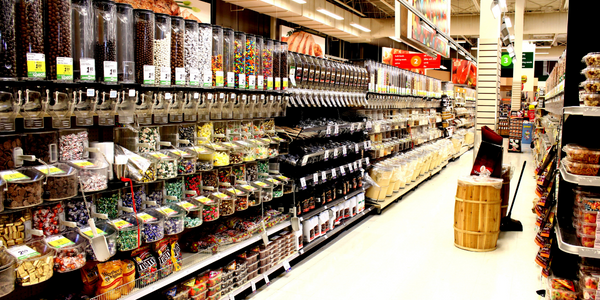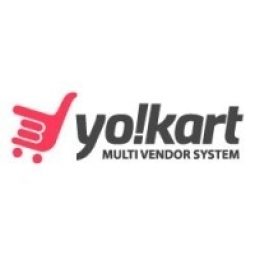Technology Category
- Analytics & Modeling - Computer Vision Software
- Platform as a Service (PaaS) - Application Development Platforms
Applicable Industries
- E-Commerce
- Retail
Use Cases
- Retail Store Automation
About The Customer
Mycart Mauritius is an online shopping platform that aims to facilitate ease of online shopping for customers in the Mauritius and Rodrigues region. The platform brings together customers and vendors from all over the region onto a single online platform. The marketplace features products from numerous categories ranging from trendy gadgets to the latest in fashion. The platform is designed to be user-friendly and reliable, with a focus on providing a seamless shopping experience for customers. Mycart also offers exceptional customer service, including live chat support, to ensure complete customer satisfaction.
The Challenge
Vishal Anand, a Mauritian entrepreneur, envisioned a marketplace that would bring together all customers and vendors from Mauritius & Rodrigues onto a single online platform. The goal was to create a platform where businesses of all sizes could sell their products, providing customers with a wide range of products irrespective of their location in Mauritius and Rodrigues. However, the challenge was to create a user-friendly and reliable website that could handle a large volume of products and vendors, while also providing a seamless shopping experience for customers.
The Solution
The solution was provided by Yo!Kart, a team that engineered a user-friendly and reliable website, Mycart.mu. Keeping up with the trend of customers’ preference to shop using mobiles, Mycart also features mobile apps on the Google Playstore. Mycart allows vendors to sign up without charging anything from them. The marketplace also facilitates ease of doing business for the vendors. The vendors can customize and manage their online store. They can also manage their orders, inventory, product listings, and more. A customer-centric approach has been a cornerstone of Mycart’s success. To ensure complete customer satisfaction Mycart offers customer support through live chat support.
Operational Impact

Case Study missing?
Start adding your own!
Register with your work email and create a new case study profile for your business.
Related Case Studies.

Case Study
Improving Production Line Efficiency with Ethernet Micro RTU Controller
Moxa was asked to provide a connectivity solution for one of the world's leading cosmetics companies. This multinational corporation, with retail presence in 130 countries, 23 global braches, and over 66,000 employees, sought to improve the efficiency of their production process by migrating from manual monitoring to an automatic productivity monitoring system. The production line was being monitored by ABB Real-TPI, a factory information system that offers data collection and analysis to improve plant efficiency. Due to software limitations, the customer needed an OPC server and a corresponding I/O solution to collect data from additional sensor devices for the Real-TPI system. The goal is to enable the factory information system to more thoroughly collect data from every corner of the production line. This will improve its ability to measure Overall Equipment Effectiveness (OEE) and translate into increased production efficiencies. System Requirements • Instant status updates while still consuming minimal bandwidth to relieve strain on limited factory networks • Interoperable with ABB Real-TPI • Small form factor appropriate for deployment where space is scarce • Remote software management and configuration to simplify operations

Case Study
Digital Retail Security Solutions
Sennco wanted to help its retail customers increase sales and profits by developing an innovative alarm system as opposed to conventional connected alarms that are permanently tethered to display products. These traditional security systems were cumbersome and intrusive to the customer shopping experience. Additionally, they provided no useful data or analytics.

Case Study
How Sirqul’s IoT Platform is Crafting Carrefour’s New In-Store Experiences
Carrefour Taiwan’s goal is to be completely digital by end of 2018. Out-dated manual methods for analysis and assumptions limited Carrefour’s ability to change the customer experience and were void of real-time decision-making capabilities. Rather than relying solely on sales data, assumptions, and disparate systems, Carrefour Taiwan’s CEO led an initiative to find a connected IoT solution that could give the team the ability to make real-time changes and more informed decisions. Prior to implementing, Carrefour struggled to address their conversion rates and did not have the proper insights into the customer decision-making process nor how to make an immediate impact without losing customer confidence.

Case Study
Ensures Cold Milk in Your Supermarket
As of 2014, AK-Centralen has over 1,500 Danish supermarkets equipped, and utilizes 16 operators, and is open 24 hours a day, 365 days a year. AK-Centralen needed the ability to monitor the cooling alarms from around the country, 24 hours a day, 365 days a year. Each and every time the door to a milk cooler or a freezer does not close properly, an alarm goes off on a computer screen in a control building in southwestern Odense. This type of alarm will go off approximately 140,000 times per year, equating to roughly 400 alarms in a 24-hour period. Should an alarm go off, then there is only a limited amount of time to act before dairy products or frozen pizza must be disposed of, and this type of waste can quickly start to cost a supermarket a great deal of money.

Case Study
Supermarket Energy Savings
The client had previously deployed a one-meter-per-store monitoring program. Given the manner in which energy consumption changes with external temperature, hour of the day, day of week and month of year, a single meter solution lacked the ability to detect the difference between a true problem and a changing store environment. Most importantly, a single meter solution could never identify root cause of energy consumption changes. This approach never reduced the number of truck-rolls or man-hours required to find and resolve issues.








